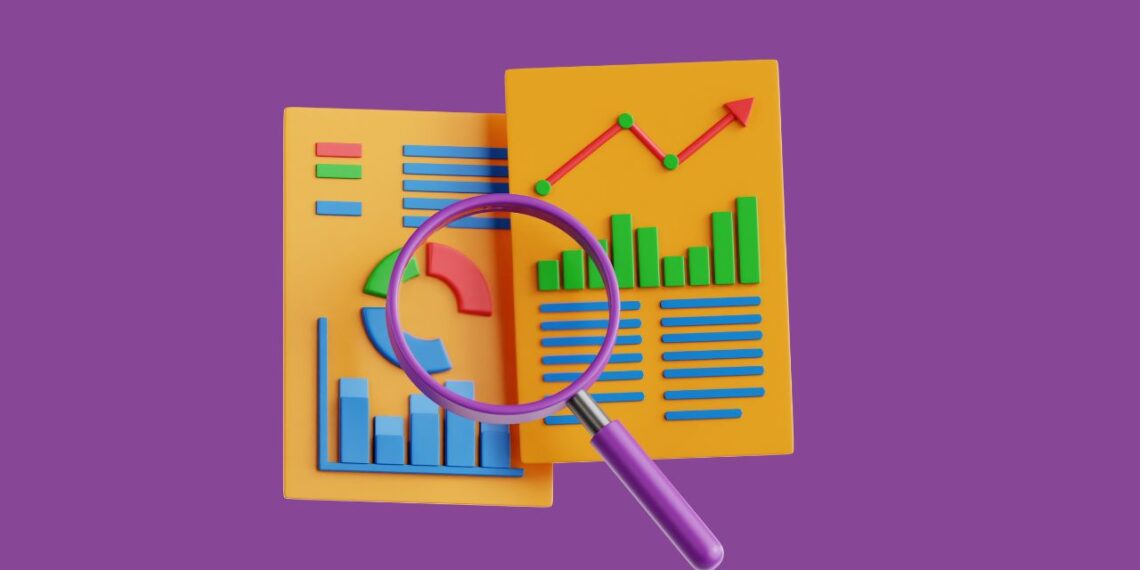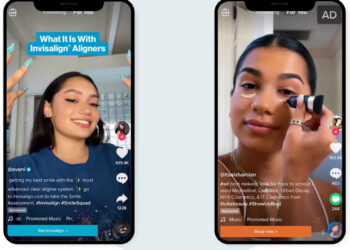Looking to make sense of conversion metrics? You’re in the right place! Whether you’re stepping into the world of digital marketing for the first time or looking to sharpen your skills, this guide is designed to demystify the numbers and terms that make up the backbone of successful marketing campaigns. Understanding conversion metrics is key to decoding the actions your audience takes and how well your strategies resonate with them.
From exploring what conversion really means to unraveling the acronyms that populate marketing discussions, we’ll navigate together through this essential landscape. By the end of this article, you’ll not only grasp the importance of metrics like Click Through Rate (CTR) and Cost Per Acquisition (CPA) but also know how to apply this knowledge to boost your marketing results. Let’s dive in and turn those metrics into milestones on your path to digital marketing mastery!
What is Conversion?
In digital marketing, “conversion” refers to the successful completion of a desired action by a user. This action can vary widely depending on the context and goals of a specific campaign. It might be purchasing a product, signing up for a newsletter, downloading an app, or simply clicking a link. Essentially, whenever a user performs the action that you’ve set out for them, a conversion is recorded.
The Conversion Rate
The conversion rate is a key metric that helps you understand how effectively you are achieving your goals. It is calculated by dividing the number of conversions by the total number of visitors and then multiplying the result by 100 to get a percentage. For example, if 100 people visit your ice cream cart and 50 of them buy a cone, your conversion rate would be 50%. This high conversion rate indicates a successful interaction with your customers.
Why is Conversion Rate Important?
Understanding your conversion rate is vital because it directly reflects the effectiveness of your marketing efforts and the appeal of your offer. A high conversion rate often suggests that your marketing strategies are effective and that you are successfully convincing users to take the desired action. Conversely, a low conversion rate might indicate that there are barriers to conversion, such as unclear messaging, poor website usability, or an unappealing offer, which need to be addressed to improve performance.
Conversion Beyond Sales
While sales are a common focus, conversion actions can include any quantifiable engagement that is valuable to your business. For example:
- Email Marketing: In email campaigns, a conversion might be measured by how many recipients click a link within the email. If you send an email to 1,000 people and 100 click on the embedded link, your conversion rate for that action is 10%.
- Social Media: On social media platforms, conversions can be the number of users who engage with a post through likes, comments, or shares. If a post is seen by 5,000 people and 500 interact with it, the conversion rate for engagement is 10%.
Understanding these varied forms of conversions can help you tailor your marketing strategies across different platforms and campaigns, ensuring that you are effectively engaging with your audience no matter where they encounter your brand.
In summary, grasping the concept of conversion and its rate is fundamental for any digital marketer. It not only measures the success of individual campaigns but also provides insights into the overall health of your business in the digital realm. By monitoring and optimizing your conversion rates, you can significantly enhance the impact and profitability of your marketing efforts.
READ MORE
Key Conversion Metrics
In digital marketing, several metrics are pivotal in tracking and analyzing the effectiveness of your efforts. Understanding these metrics will allow you to refine your strategies and maximize the impact of your campaigns. Here, we will explore some of the most crucial conversion-related metrics including Click Through Rate (CTR) and Cost Per Click (CPC).
Click Through Rate (CTR)
Definition and Importance
Click Through Rate (CTR) is a fundamental metric used to measure the effectiveness of an online advertising campaign. CTR is calculated by dividing the number of clicks an ad receives by the number of times the ad is shown (impressions), multiplied by 100 to express the result as a percentage. For example, if your ad receives 10 clicks and 1000 impressions, your CTR is 1%.
CTR is a critical indicator of how well your ads, keywords, and free listings are performing. A higher CTR indicates that users find your ads relevant and enticing, suggesting that your messaging is effective in capturing attention.
Applications of CTR
- Email Campaigns: In emails, CTR helps measure how compelling your email content is, particularly in prompting readers to take an action like clicking a link.
- Social Media: On platforms like Facebook or Twitter, CTR can gauge the effectiveness of ad creatives and campaign targeting.
- Landing Pages: CTR can also apply to links and calls-to-action on a landing page, indicating how well these elements convert visits into actions.
Cost Per Click (CPC)
Understanding CPC
Cost Per Click (CPC) is another vital metric that measures the cost of each click in a pay-per-click (PPC) marketing campaign. It is calculated by dividing the total cost of your clicks by the total number of clicks. For instance, if you spend $100 on a campaign and get 100 clicks, your CPC is $1.00 per click.
Why CPC Matters
CPC is essential for budget management in advertising campaigns. It helps determine the financial efficiency of your ads and how much you are spending to attract attention and potentially convert viewers into customers. Managing CPC effectively can help you optimize your ad spend for better ROI.
Strategic Use of CPC
- Budgeting: By analyzing CPC, marketers can adjust their advertising budget based on the cost-effectiveness of different channels or ads.
- Ad Performance: Comparing the CPC across different campaigns can provide insights into which types of ads and targeting strategies are most cost-effective.
- Keyword Optimization: In search advertising, different keywords will have different CPCs. Identifying which keywords give you the best return on investment can help focus your efforts and budget more effectively.
These metrics, CTR and CPC, are indispensable tools in a marketer’s arsenal, helping to fine-tune advertising efforts and ensuring that every dollar spent is done so effectively. By continuously monitoring and analyzing these metrics, you can significantly improve the performance of your marketing campaigns, leading to better conversion rates and higher returns on your marketing investments.
Costs Associated with Conversion
Beyond merely tracking clicks and interactions, it’s crucial to understand the costs involved in achieving conversions. This section delves into essential metrics like Cost Per Acquisition (CPA), Customer Acquisition Cost (CAC), and Cost Per Lead (CPL), which help quantify the efficiency of your marketing spend.
Cost Per Acquisition (CPA)
Defining CPA
Cost Per Acquisition (CPA) measures the total cost of acquiring a customer who completes a desired action, such as a purchase. This metric is vital for understanding how much you are spending to convert a visitor into a customer through specific channels. CPA is calculated by dividing the total campaign cost by the number of conversions.
Why CPA is Important
- Budget Optimization: CPA helps determine if the cost of your advertising campaigns is justified by the returns they generate.
- Campaign Assessment: By evaluating CPA, you can identify which campaigns are cost-effective and which are underperforming, allowing for reallocation of resources to more profitable areas.
Customer Acquisition Cost (CAC)
Understanding CAC
Customer Acquisition Cost (CAC) refers to the total cost of acquiring a new customer, considering all marketing and sales expenses over a specific period. Unlike CPA, which may focus on a single campaign or conversion action, CAC encompasses all marketing and sales costs to provide a broader view of the investment required to gain a new customer.
Significance of CAC
- Long-term Planning: CAC is critical for evaluating the sustainability of your marketing strategies. A low CAC means your business can sustainably grow without disproportionately increasing your marketing spend.
- Profitability Analysis: Understanding CAC in relation to customer lifetime value (CLV) can help you determine whether your customer acquisition strategies are profitable.
Cost Per Lead (CPL)
Defining CPL
Cost Per Lead (CPL) measures the cost of acquiring a potential customer who has shown interest in your product or service, typically by filling out a form or signing up for more information. CPL is especially relevant in B2B marketing, where the sales cycle is longer, and leads are nurtured over time.
Why CPL Matters
- Marketing Efficiency: CPL helps marketers evaluate the cost-effectiveness of lead generation campaigns.
- Resource Allocation: By understanding CPL, companies can better allocate their marketing budgets to the most effective lead-generation strategies.
Balancing Costs and Returns
Each of these metrics—CPA, CAC, and CPL—plays a crucial role in the financial health of your marketing efforts. By monitoring and optimizing these costs, businesses can ensure that they are not only attracting customers but doing so in a financially sustainable way. This balance between cost and acquisition is essential for long-term business growth and profitability.
In the next section, we will explore metrics related to views and impressions, which further illuminate how your content and ads perform across different platforms, contributing to informed marketing decisions and strategic planning.
Understanding Views and Impressions
In digital marketing, metrics related to views and impressions provide crucial insights into the reach and frequency of your content and advertising efforts. Understanding these metrics, such as Cost Per Mille (CPM) and Cost Per View (CPV), can help you gauge the effectiveness of your branding and advertising strategies. This section explores these metrics and their practical applications.
Cost Per Mille (CPM)
What is CPM?
Cost Per Mille (CPM), also known as cost per thousand impressions, is a metric used to denote the price of 1,000 advertisement impressions on one webpage. If an advertiser pays $2.00 for a CPM, this means that they pay $2.00 for every 1,000 impressions of their ad.
Why is CPM Important?
- Budgeting for Brand Awareness: CPM is particularly useful for campaigns aimed at enhancing brand visibility rather than direct response. It allows businesses to budget for the number of people they want their campaign to reach.
- Comparing Media Efficiency: CPM offers a standard measure to compare the cost-effectiveness of different advertising channels and platforms, helping advertisers make informed decisions.
Cost Per View (CPV)
Understanding CPV
Cost Per View (CPV) is used primarily in video advertising, where advertisers pay based on the number of views or interactions (like clicks on calls to action) an ad receives. This metric is commonly associated with platforms that host video content, such as YouTube.
Significance of CPV
- Engagement Measurement: CPV is crucial for campaigns where engagement is more important than mere exposure. It helps marketers understand how compelling their video content is to their target audience.
- Optimizing Video Content: By analyzing CPV data, marketers can fine-tune their video content strategies to ensure better engagement and cost-efficiency.
Balancing Reach and Engagement
While CPM and CPV offer insights into the initial reach and engagement of ads, marketers need to balance these metrics with conversion-related ones to ensure they are not just reaching a broad audience but are also engaging them effectively. This involves:
- Targeting: Ensuring the content reaches the most relevant audience to maximize both impressions and engagement.
- Content Quality: Creating high-quality, engaging content that resonates with the target audience to improve view rates and interactions.
Conclusion
Metrics like CPM and CPV are essential for understanding how your content performs in terms of visibility and engagement. They provide a framework for measuring the success of your advertising campaigns and help refine strategies to maximize both reach and impact.
In the final section of our article, we will recap the importance of understanding all these metrics and discuss strategies for continuous improvement in your marketing efforts. By keeping a pulse on these metrics, marketers can ensure that they not only reach their target audience but also engage them effectively, paving the way for better conversions and successful campaigns.










